I’m excited to share with you the ultimate guide to sleek kitchen islands for narrow spaces. As someone who values efficiency and style, I know how important it is to maximize space. A well-designed kitchen island can make a narrow kitchen more functional and stylish. It adds extra storage and counter space with Kitchen Island Ideas With Cabinets.
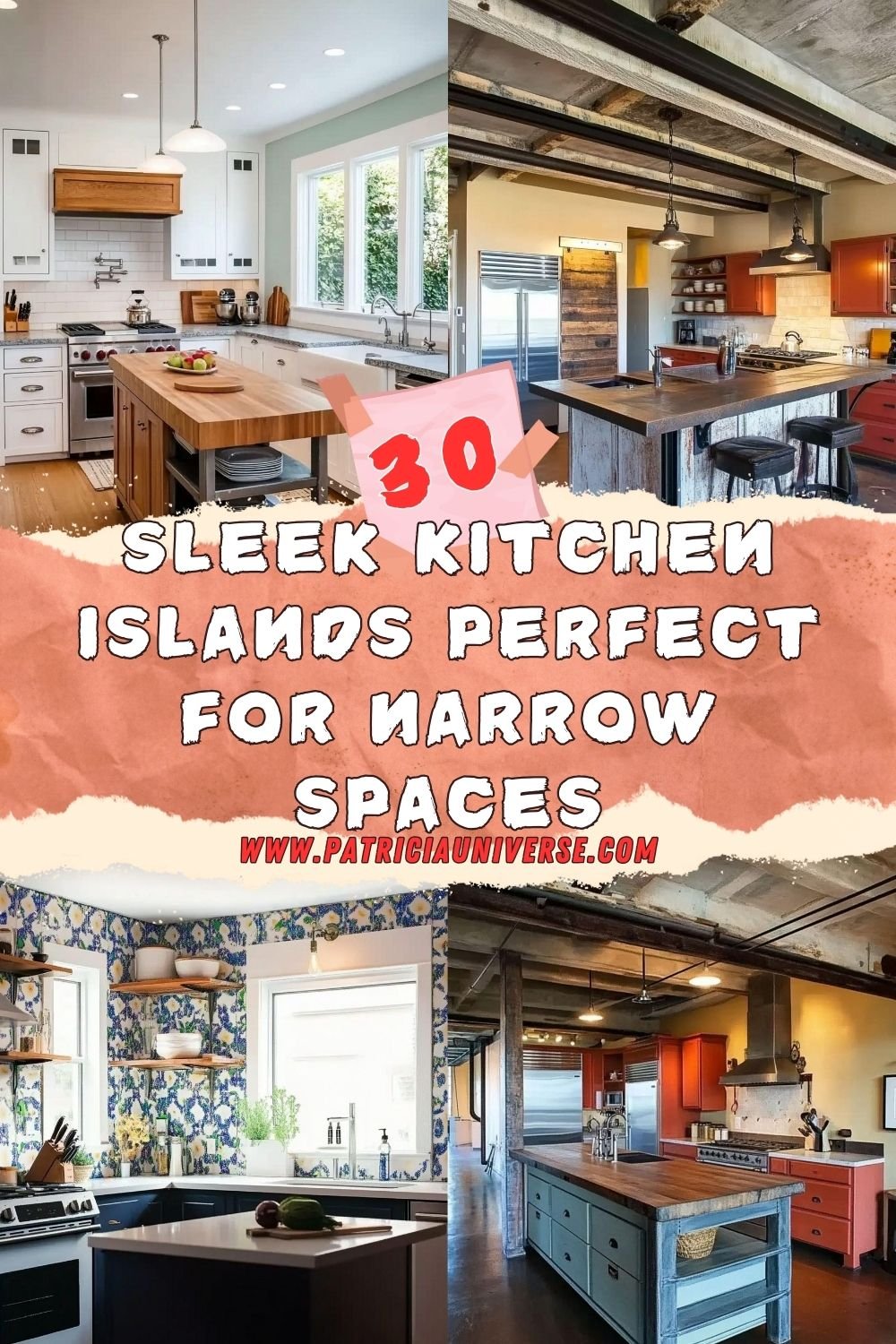
Kitchen Islands With Seating create a cozy and inviting atmosphere. Imagine having a kitchen island with built-in seating for your morning coffee or quick breakfast. We’ll explore various options for homeowners looking to upgrade their kitchen with sleek islands.
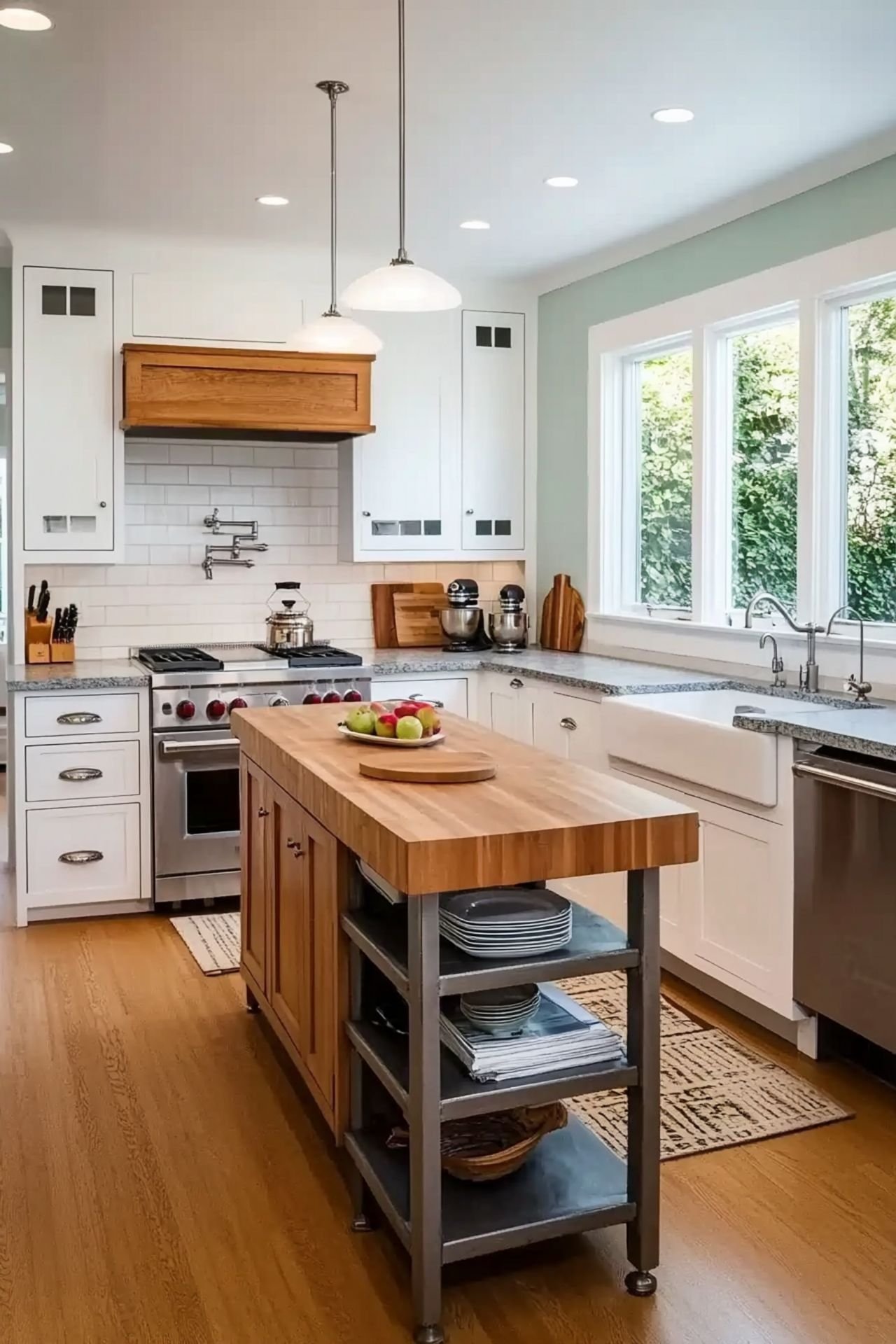
Looking to renovate your small kitchen or add extra functionality? A sleek kitchen island is a great solution. With over 30 sleek kitchen island ideas, you’ll find the perfect one for your style and needs.
Key Takeaways
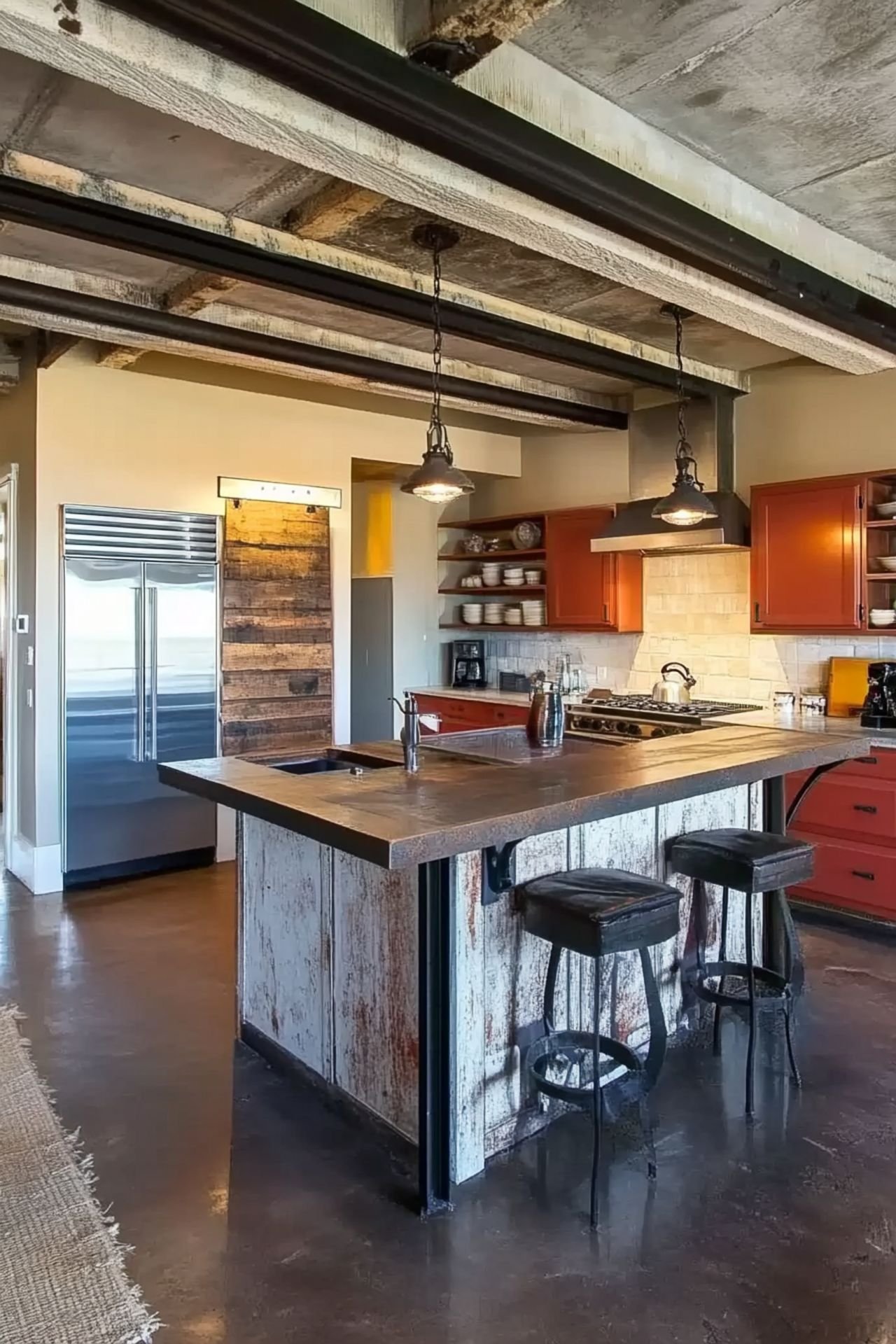
- A sleek kitchen island can add style and efficiency to a narrow kitchen
- Kitchen Island Ideas With Cabinets can provide extra storage and counter space
- Kitchen Islands With Seating can create a cozy and inviting atmosphere
- A well-designed kitchen island can enhance the functionality and aesthetic of a narrow kitchen
- There are over 30 sleek kitchen island ideas to choose from, catering to different styles and needs
- Working with professionals can ensure optimal functionality and flow in the kitchen
Why a Kitchen Island for Narrow Kitchen Spaces Makes Sense
In narrow kitchens, every inch is precious. A well-designed kitchen island offers extra workspace, storage, and seating. With the right Kitchen Island Design, your kitchen becomes more functional and stylish. Adding Kitchen Islands Ideas With Seating makes it cozy and inviting.

A kitchen island can do many things. It can give you more counter space for food prep and store kitchen tools and appliances. It makes your kitchen more efficient and functional. For instance, you can store items like cookbooks, spices, and oils on it, keeping them handy.
Space-saving Benefits
A kitchen island that fits right can balance extra space without blocking the way. Here are some tips for a space-saving island:
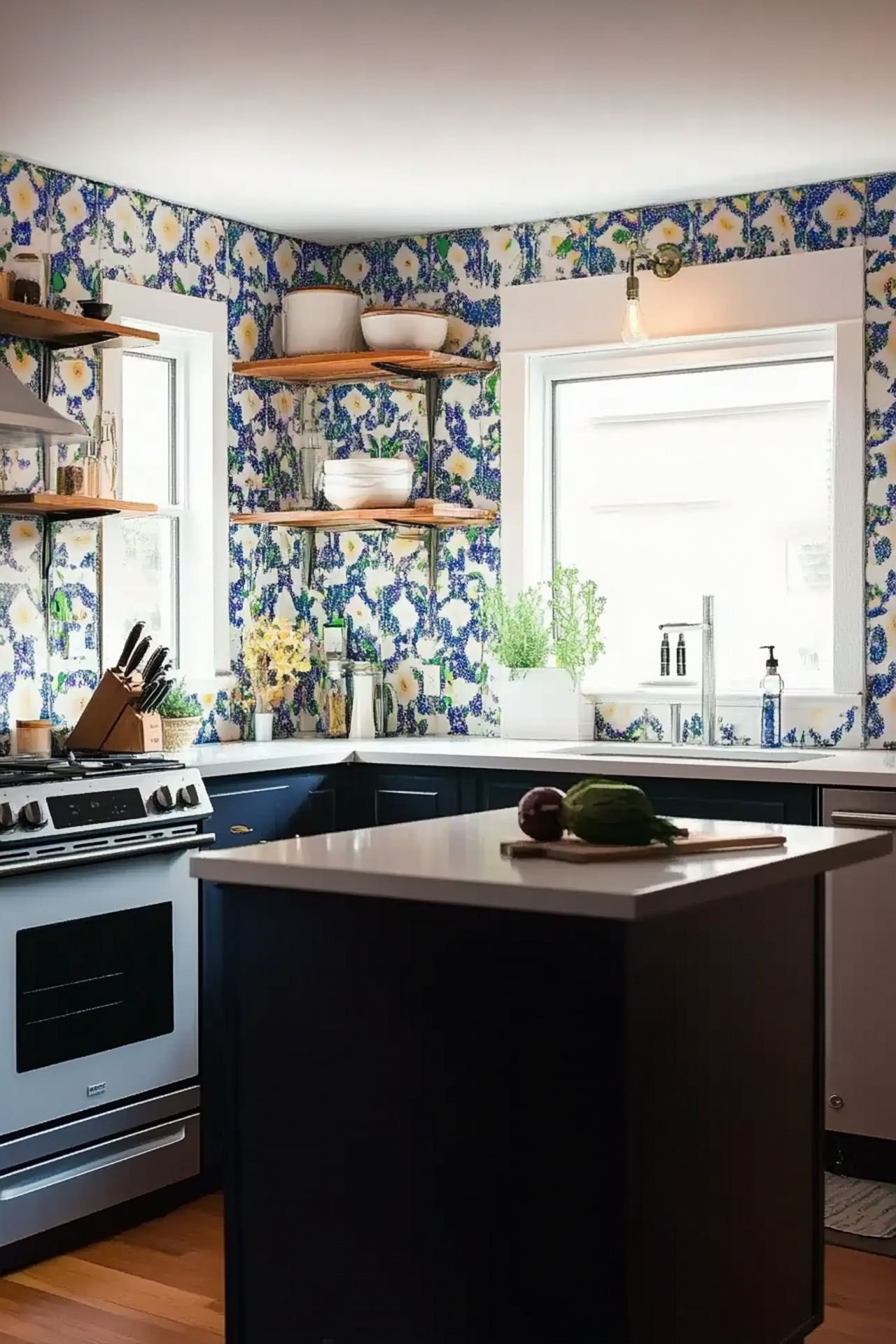
- Optimal island dimensions: usually 24 to 36 inches deep and 4 feet long
- Minimum clearance guidelines: at least 42 inches of space around the island
- Smart storage solutions: adding appliances like sinks or dishwashers to the island
Functionality Enhancement
A kitchen island boosts your narrow kitchen’s functionality. It adds counter space, storage, and seating. Think about an island with a built-in sink, stove, or fridge for a more efficient kitchen.

Value Addition to Your Home
A well-designed kitchen island increases your home’s value. It makes your kitchen more functional and stylish. By using Kitchen Islands Ideas With Seating and Kitchen Island Design, you create a welcoming space that attracts buyers.
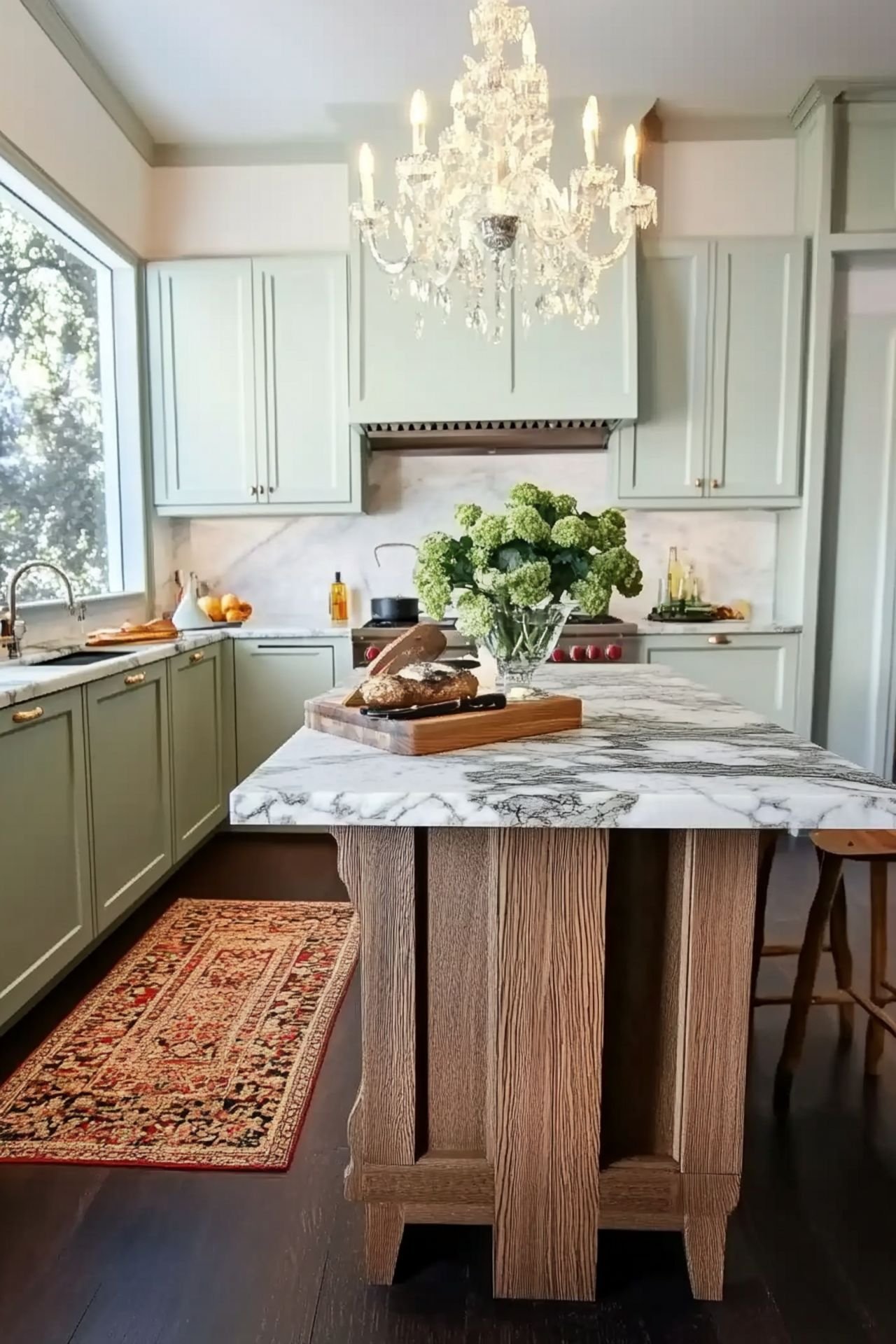
Understanding Your Space Requirements
When you think about Narrow Islands In Kitchen, knowing your space needs is key. I look at the kitchen’s size and the space you have. This ensures your island is both useful and well-placed.

It’s not just about the island’s size. How it matches your home’s size is also important.
A big part of planning is the space around the island. Guidelines say the island should fit the room well, not just follow a set size. For example, you should have at least 3 feet of space between counters and the island. But 4 feet or more is even better.
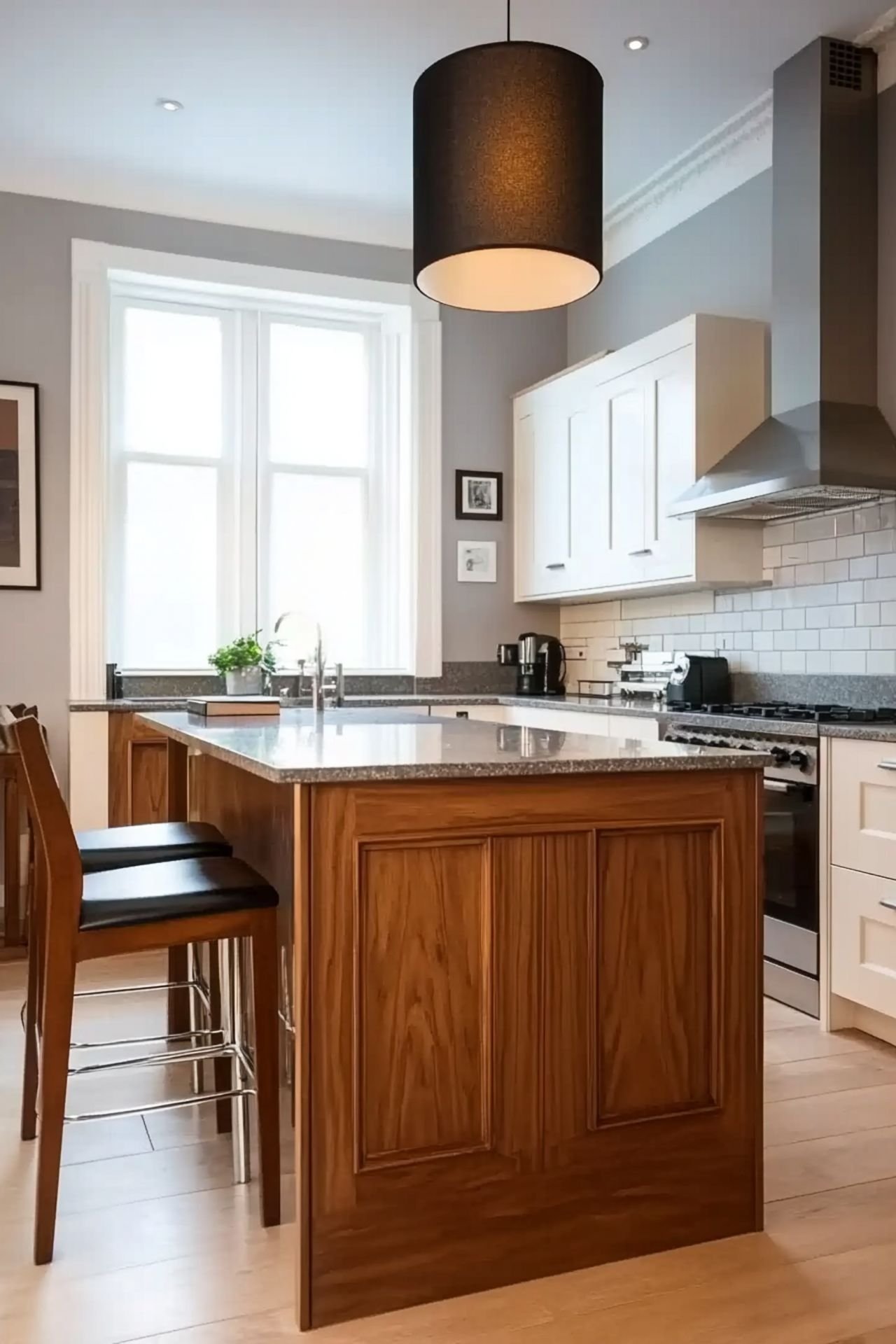
When picking the perfect size for your Narrow Islands In Kitchen, think about a few things:
- Circulation space and work zones
- Alignments with plumbing fixtures and appliances
- Availability of countertop materials
- Ensuring easy movement around the island
By keeping these points in mind, you can make a Narrow Islands In Kitchen that works well. It will meet your needs and improve your kitchen’s look.
Essential Measurements for Narrow Kitchen Islands
When designing a Narrow Kitchen With Island Layout, it’s key to think about the right measurements. This ensures your space is both functional and efficient. The minimum size around a kitchen island should be at least 1000mm on all sides. For busier kitchens, it’s best to have walkways that are 1200mm wide.
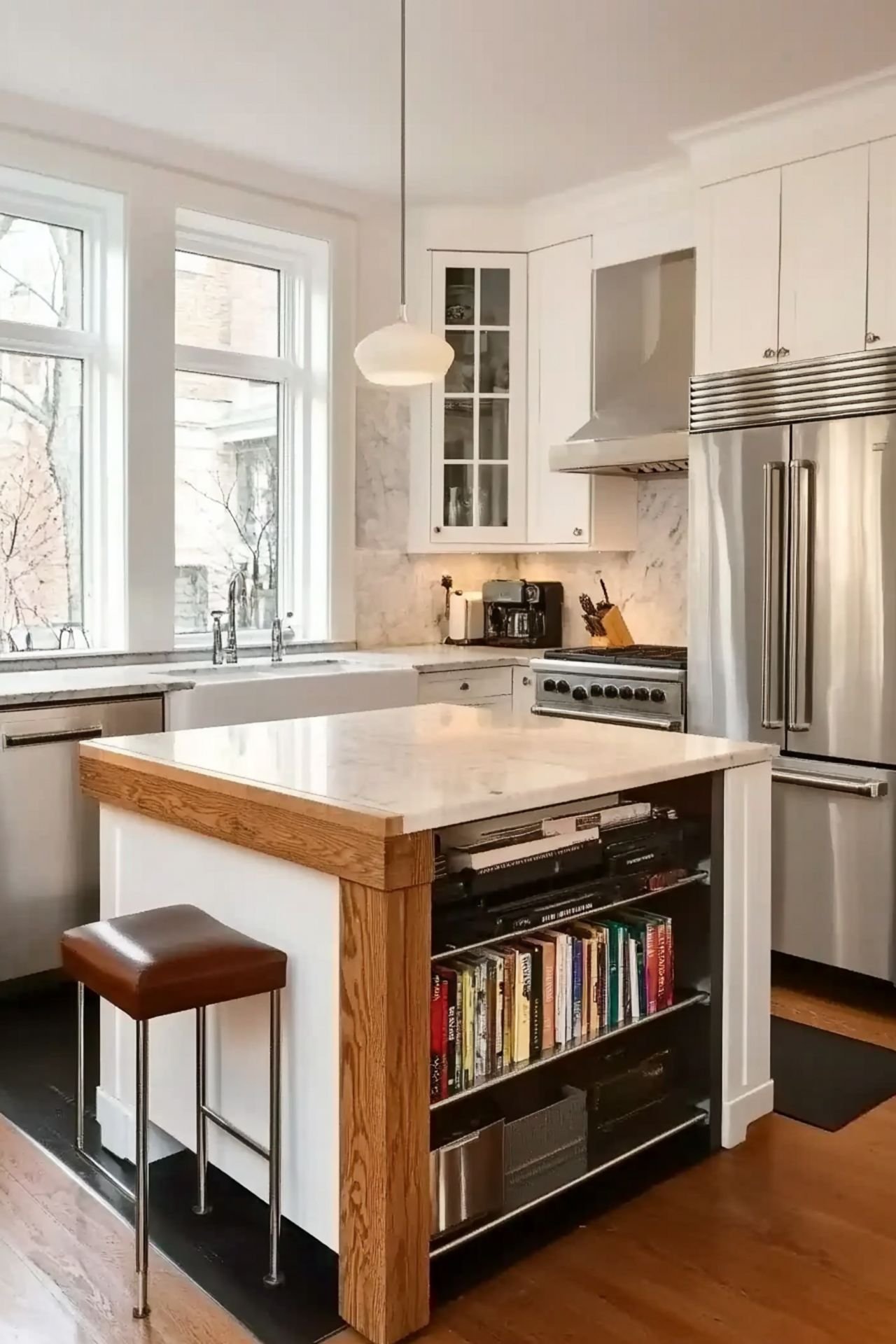
Another important thing is the seating clearance. It should be at least 600mm behind stools for easy movement. In larger kitchens, walkways around the island should be at least 1200mm wide. The prep surface on a kitchen island is usually between 900-950mm high.
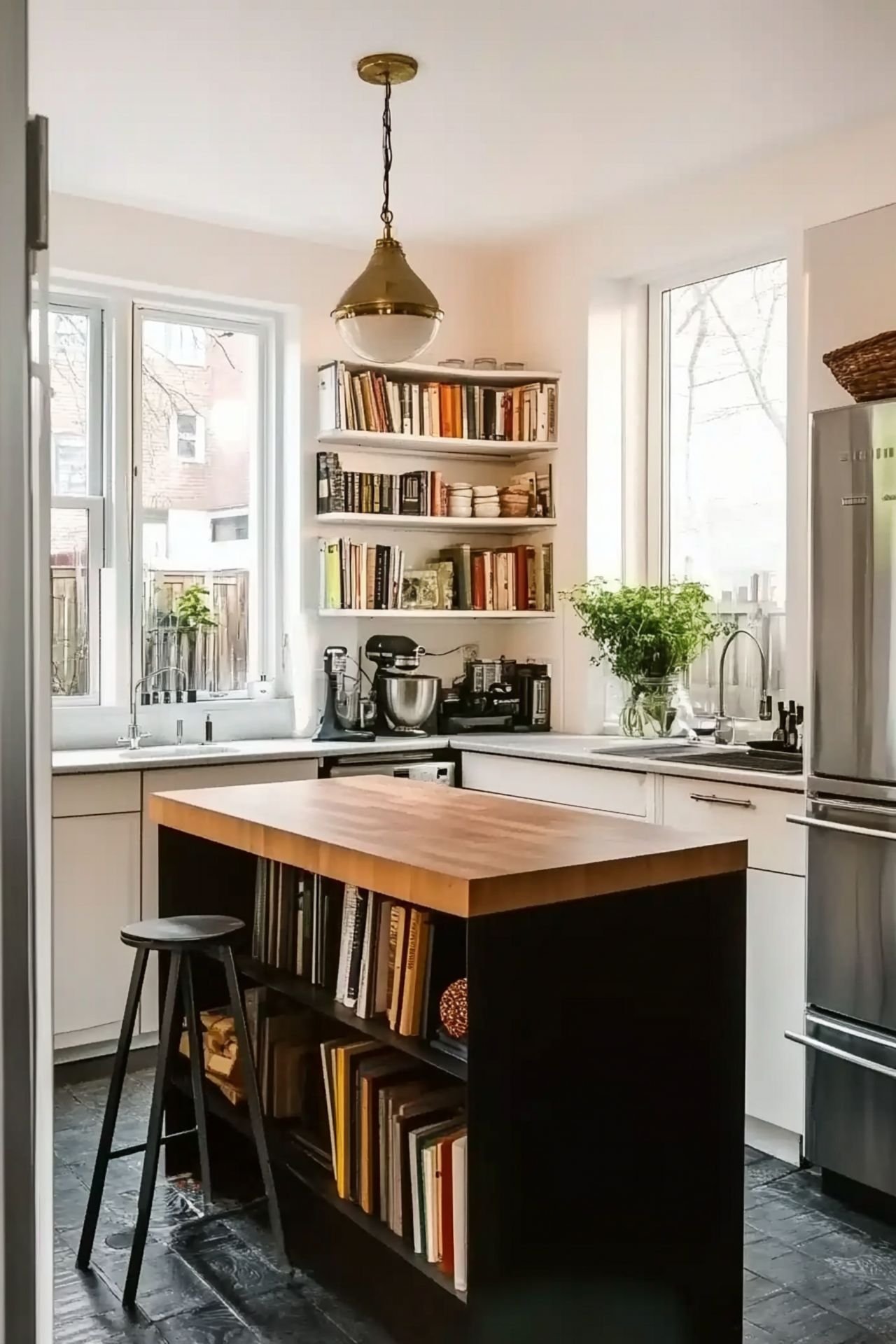
Some other measurements to remember include: * Minimum clearance guidelines: 1000mm on all sides * Optimal island dimensions: 1200mm wide walkways in busy kitchens * Traffic flow considerations: at least 1200mm wide walkways around the kitchen island
By keeping these measurements in mind, homeowners can create a Narrow Kitchen With Island Layout that works well. This makes the most of the available space.
Popular Styles of Narrow Kitchen Islands
There are many styles for narrow kitchen islands, like modern, country, and open-concept. Kitchen Island Ideas With Cabinets are perfect for those who need more storage. These styles make your kitchen island both useful and beautiful.
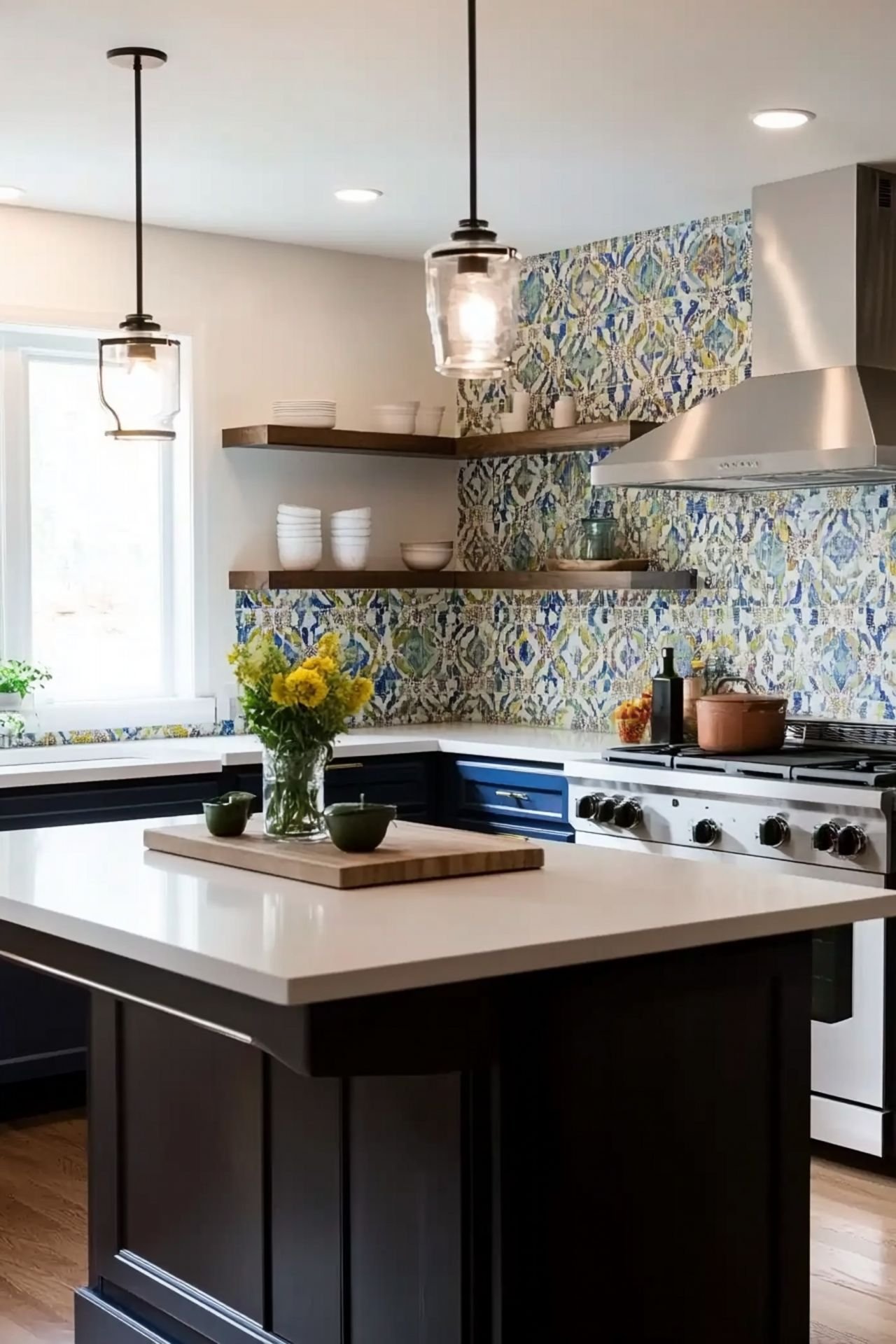
Narrow kitchen islands often have small sizes, hidden storage, and mobility with wheels. These features help you use your kitchen space well while keeping it looking good. For instance, a narrow island with cabinets can store kitchen tools, pots, and pans neatly.
Here are some benefits of narrow kitchen islands:
- Space-saving design
- Increased functionality
- Enhanced aesthetic appeal
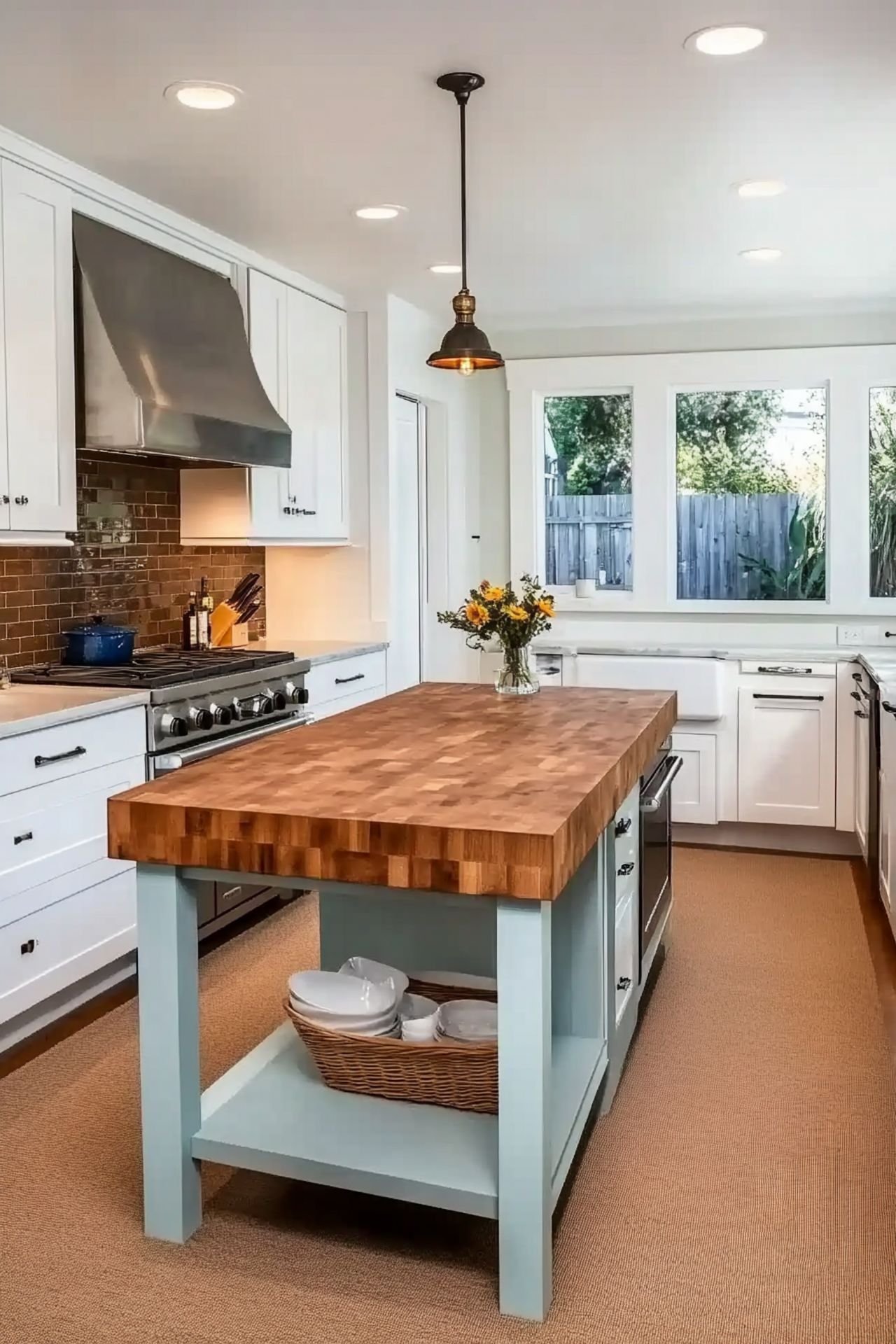
By thinking about these benefits and features, you can pick a narrow kitchen island that fits your needs and kitchen style. It’s a good idea to look at different Kitchen Island Ideas With Cabinets to find the best one for your kitchen.
Smart Storage Solutions for Compact Islands
Maximizing storage space is key for Kitchen Islands With Seating. Compact kitchen islands can have built-in cabinets for kitchen essentials. This makes them functional and efficient.

Pull-out storage features like drawers and shelves are very effective. They make it easy to get what you need while cooking or entertaining. Organizational accessories like drawer dividers and baskets also help keep things tidy.
- Hidden compartments for bulky items like blenders and toasters
- Integrated wine racks for wine enthusiasts
- Bookshelves for cookbooks and kitchen decor
- Corner storage solutions like lazy Susans or pull-out drawers

Smart storage solutions turn Kitchen Islands With Seating into more than just a place to eat. They become a central spot for cooking, dining, and gathering. Even small islands can offer lots of storage and style with a bit of creativity.
Materials and Finishes That Work Best
Choosing the right materials and finishes for a Kitchen Island Design is key. Options like wood, granite, and quartz are popular. Each has its own look and feel.
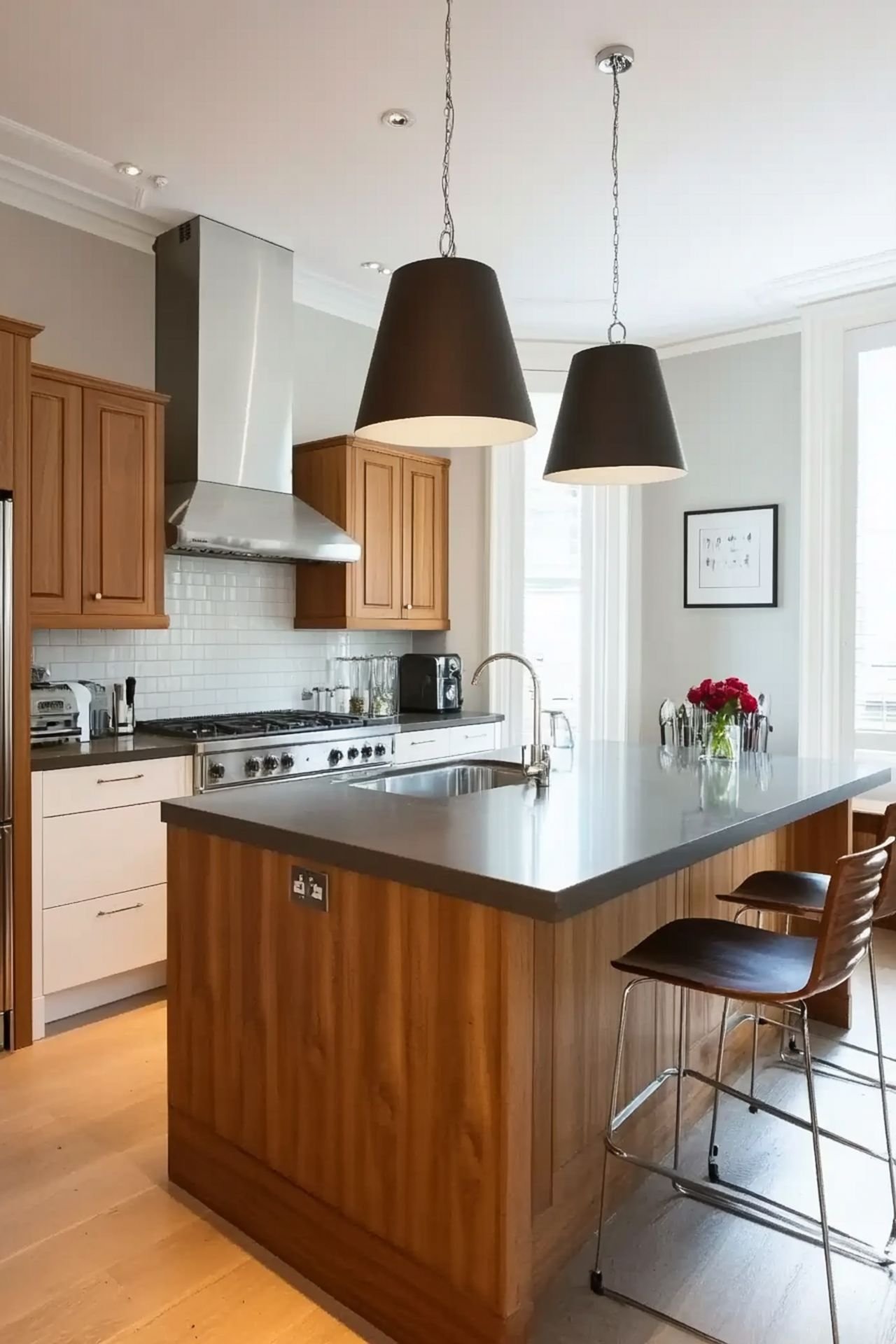
Think about how durable and easy to clean the material is. Granite and quartz are great for busy kitchens because they’re tough. Wood adds warmth but needs more care.
Here are some top picks for kitchen island materials and finishes:
- Wood: oak, maple, and cherry are popular for their warmth and character
- Granite: a durable and low-maintenance option that comes in a variety of colors and patterns
- Quartz: a versatile and stylish option that can mimic the look of natural stone

Designers say over 70% recommend built-in storage in small kitchen islands. This keeps things organized. Also, 60% suggest the island should fit well in the room without blocking the way. The right materials and finishes make the island fit your kitchen’s style and needs.
Styling is important too. 80% of designers say a clean, simple island makes the kitchen look bigger. Choosing the right materials and keeping the island tidy makes your kitchen look great and work well.
Innovative Features for Maximum Functionality
When designing a kitchen island, it’s key to think about features that boost its use. Retractable elements, like a table or countertop, can add extra space when you need it. This makes Kitchen Islands Ideas With Seating perfect for a cozy dining spot.

Consider a kitchen island with a sink, stove, or fridge for saving space. It also makes a great spot for work. Adding appliances like a microwave or dishwasher turns the island into the kitchen’s center.

Other cool features include pull-out storage, like a pantry or trash can. A built-in wine rack is also a great idea. These features help keep your kitchen tidy and make it more functional. By adding these features, you can make your kitchen island a key part of your kitchen.
Lighting Solutions for Your Island Space
Lighting is key for making Narrow Islands In Kitchen feel welcoming. Pendant lights are a top pick, as they focus light where you need it. They come in many styles, from soft lanterns to sleek bell shapes.

For a modern vibe, matte black or sculptural pendants are great. They add a touch of elegance to your kitchen.
A good kitchen has different types of lighting. This mix includes pendant lights, recessed lights, and lights under cabinets. Recessed lights offer subtle ambient light, while dimmers help control the brightness. Pendant lights are perfect for task lighting, and it’s important to look at lumens, not watts, for the right amount of light.

Some top picks for Narrow Islands In Kitchen lighting are:
- Pendant lights, such as milk glass globe pendant lights or a trio of glass pendant lights
- Chandeliers, like a black candelabra-style chandelier or a modern candle-style chandelier
- Track lighting, which offers versatility with adjustable fixtures for task, ambient, and accent lighting
- LED lights, which are energy-efficient and consume less electricity than traditional bulbs

When picking lighting for my kitchen island, I think about the natural light and the look I want. The right lighting makes my Narrow Islands In Kitchen both functional and beautiful.
Budget-friendly Options and Cost Considerations
When designing a kitchen island, cost is key. You can have a kitchen island with cabinets without spending a lot. Free standing kitchen islands are affordable and don’t sacrifice quality. They also increase your kitchen’s value.
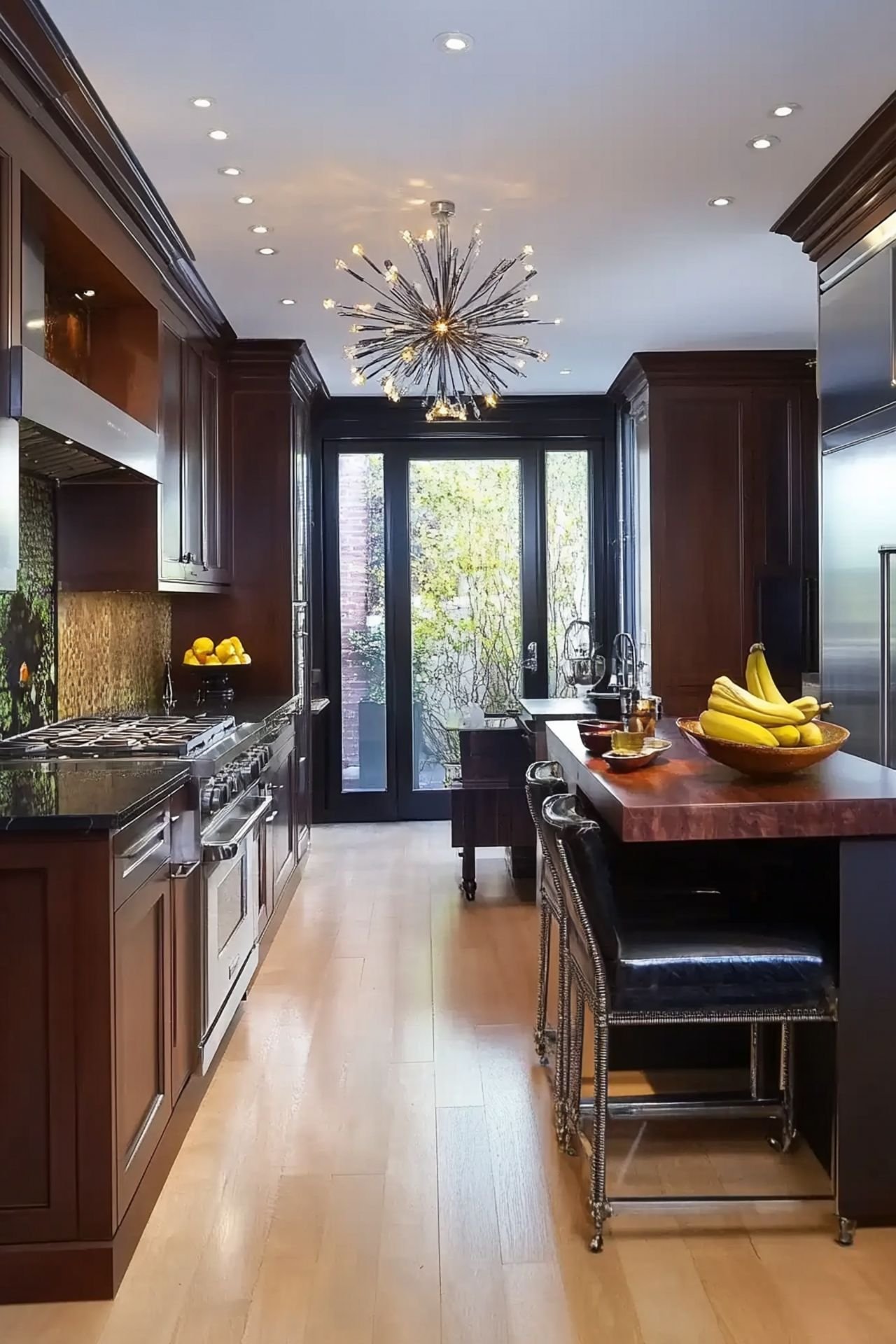
Kitchen islands offer more counter space, storage, and work areas for cooking. They come in many designs to match any kitchen style. Plus, they’re easy to move and change as your needs do.
DIY Possibilities
If you’re on a tight budget, DIY is a smart choice. You can make your own island from reclaimed wood or other materials. It saves money and makes your kitchen unique.
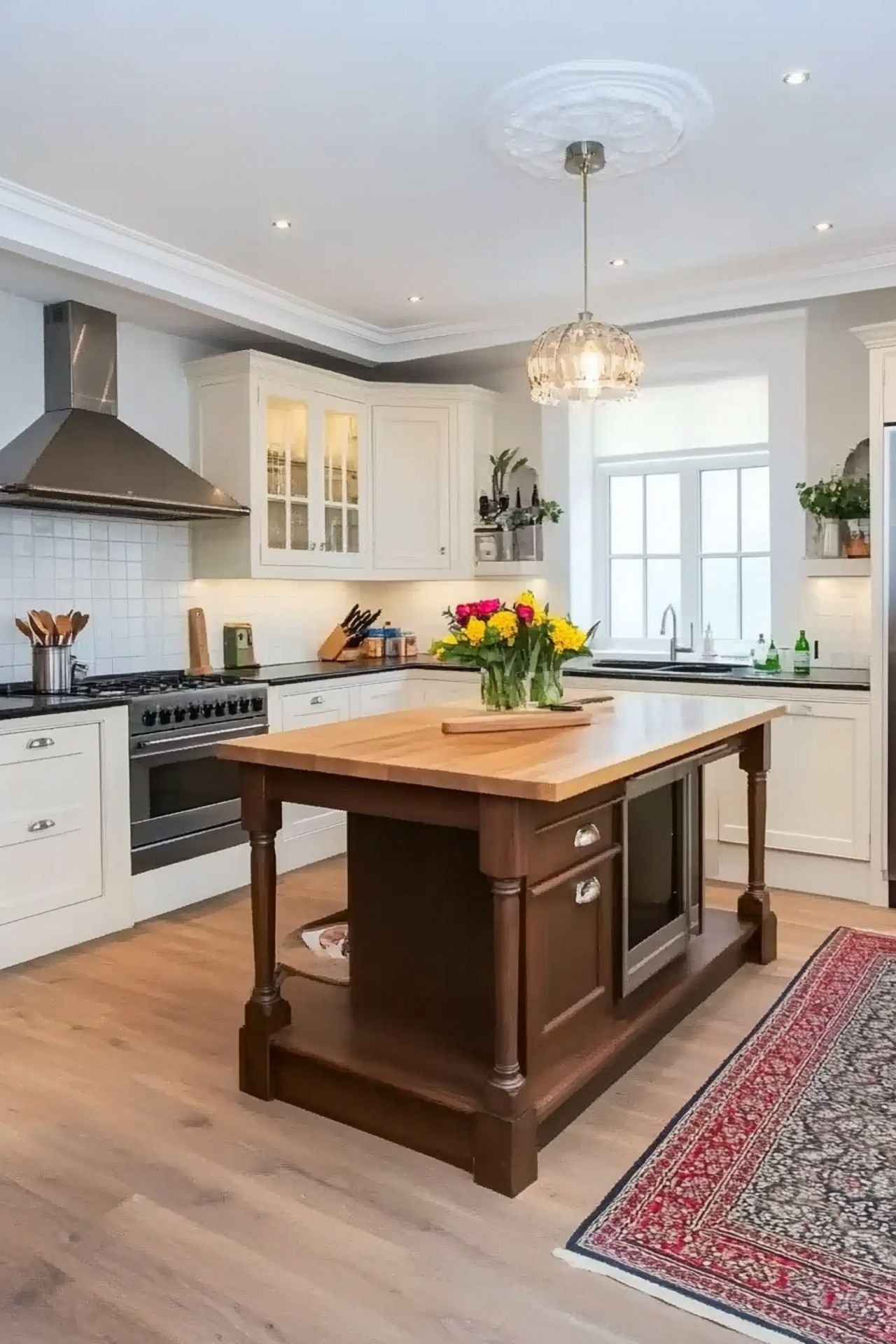
Price Range Breakdown
The price of a kitchen island varies based on size, material, and features. Here are some price ranges to keep in mind:

- Rolling Cart Island: $100 – $1,000
- Rectangular Island: $500 – $5,000
- L-Shaped Island: $1,000 – $7,000
- U-Shaped Island: $2,000 – $9,000
By looking at these factors and options, you can find a kitchen island that fits your budget. Make sure to consider size, material, features, and layout. This will make your kitchen more efficient and enjoyable.
Installation Tips and Best Practices
Installing kitchen islands with seating requires careful planning. Peter Humphrey advises allowing at least 1m of space around the island. This ensures easy movement and safety, even with seating that doesn’t fit completely under the island.
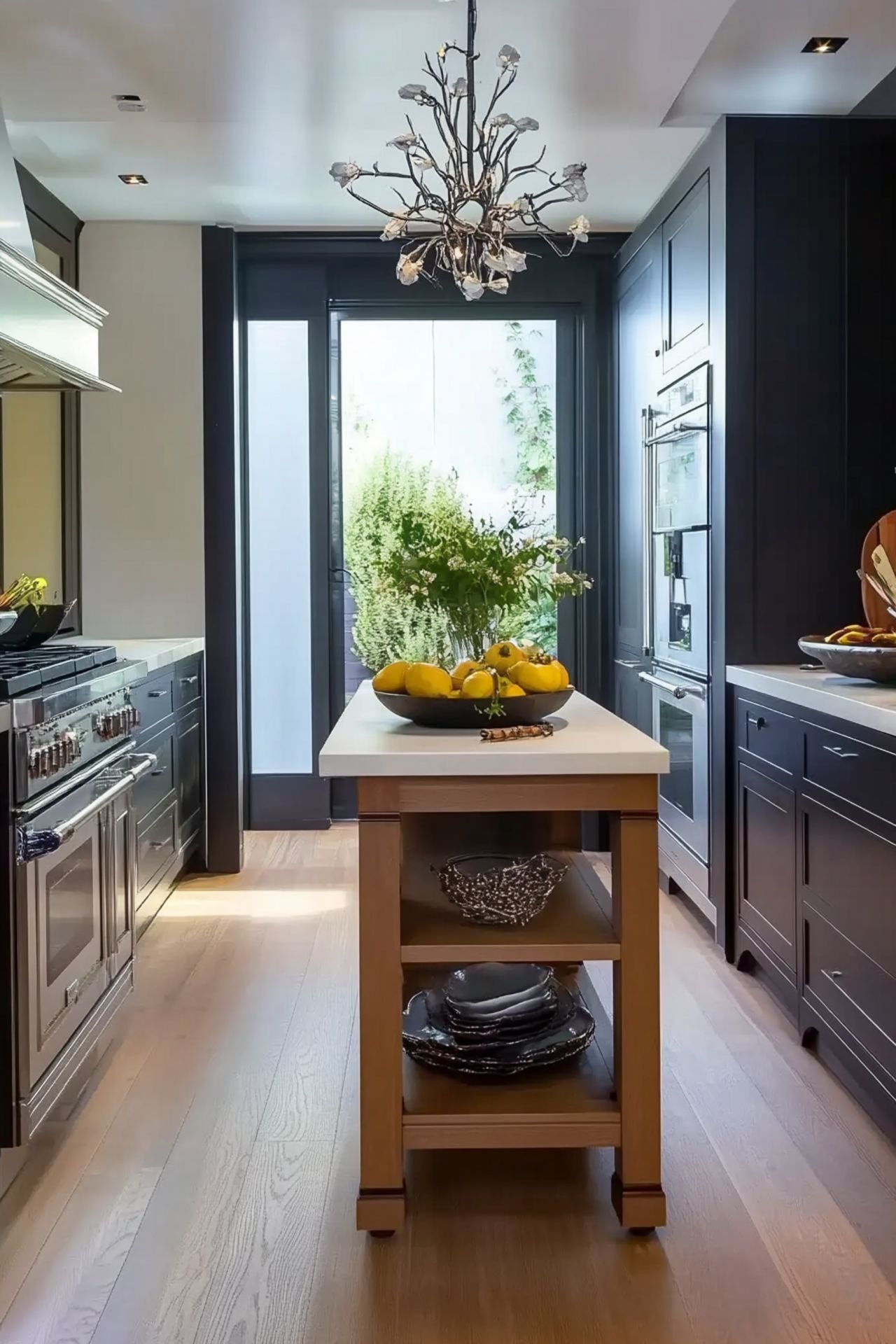
A typical kitchen island is 2m to 3m long and 1.4m to 2.2m wide. Damian Wright, Smallbone, says wider sizes can waste space in the middle. To optimize your island, consider these tips:
- Measure the space carefully to determine the ideal size and shape of your kitchen island.
- Choose between fitted and freestanding kitchen islands based on your needs, with mobile islands more flexible and fitted islands more permanent.
- Consider adding timber elements, such as chopping blocks, to delineate zones within the island and mask joints, as suggested by Graeme Smith.
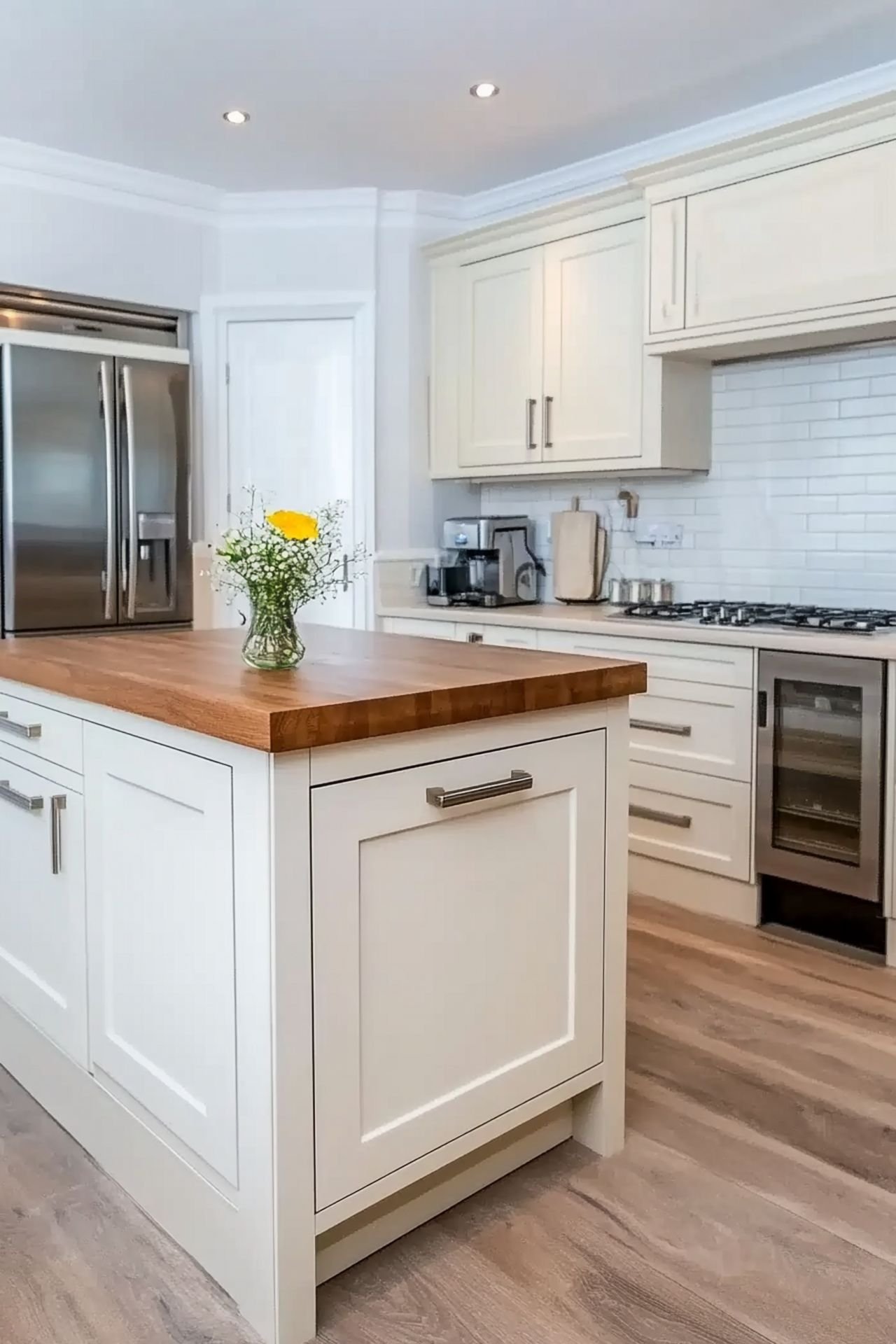
Also, plan your seating. Peter Humphrey suggests three stools for straight-line seating and four stools around one end for a sociable setup. By following these tips, you can create a functional and welcoming kitchen island with seating.
Maintenance and Care Guidelines
To keep your kitchen island looking great and working well, you need a regular care plan. This includes daily cleaning and long-term care tips. Following these steps will help your kitchen island last longer and stay useful.

For daily cleaning, make sure to wipe down the countertops and sink after each use. This stops dirt, grime, and bacteria from building up. Also, do a weekly deep clean to scrub the whole island, including cabinets and drawers.
Daily Cleaning Routines
A clean kitchen island makes your kitchen look and work better. Here are some daily cleaning tips:
- Wipe down countertops with a gentle cleaner
- Sanitize the sink and faucet
- Vacuum or sweep the floor around the island

Long-term Preservation
To keep your island safe from stains and spills, apply a sealant to the countertops. Also, check your island often for wear and tear. Fix any problems quickly to avoid more damage.

By following these care tips, your kitchen island will last for many years. Always keep it clean and well-maintained to keep your kitchen comfortable and functional.
Design Mistakes to Avoid
When designing a kitchen island for a narrow kitchen, it’s key to avoid common mistakes. A well-designed island can make your kitchen better, but a bad design can cause trouble. It’s all about making your kitchen work well and look good.

To make a kitchen island that works well, think about these important points:
- Make sure there’s enough room around the island for easy movement and work flow.
- Don’t put too many things or appliances on the island. It should be useful, not cluttered.
- The island should be the right size for your kitchen. It shouldn’t take up more than 10% of the kitchen area.
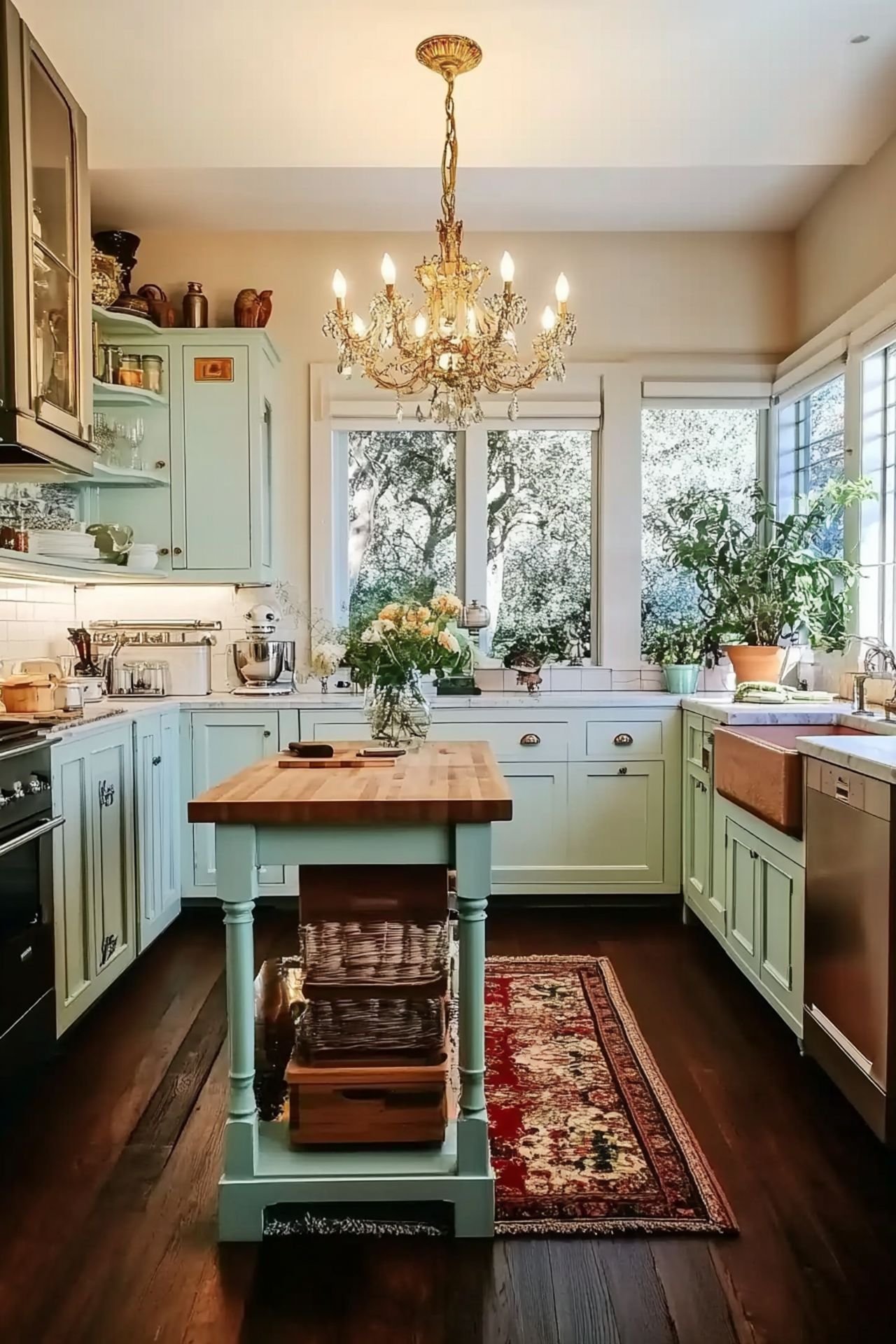
Experts say you should have 36-48 inches of space between the island and cabinets. Also, the counter should stick out 12-15 inches for comfy seating. By avoiding common mistakes and following these tips, you can make a kitchen island that’s both useful and nice to look at.
Remember the kitchen work triangle idea too. It says the fridge, stove, and sink should be close together. Using this idea in your island design makes cooking and meal prep easier.
By paying attention to these design tips and avoiding common errors, you can create a kitchen island that’s both useful and beautiful. It will be the perfect spot for cooking, entertaining, and hanging out.
Conclusion: Creating Your Perfect Narrow Kitchen Island
Creating the perfect narrow kitchen island needs careful planning. We’ve covered many important points in this article. With these tips, you can make your kitchen both functional and beautiful.
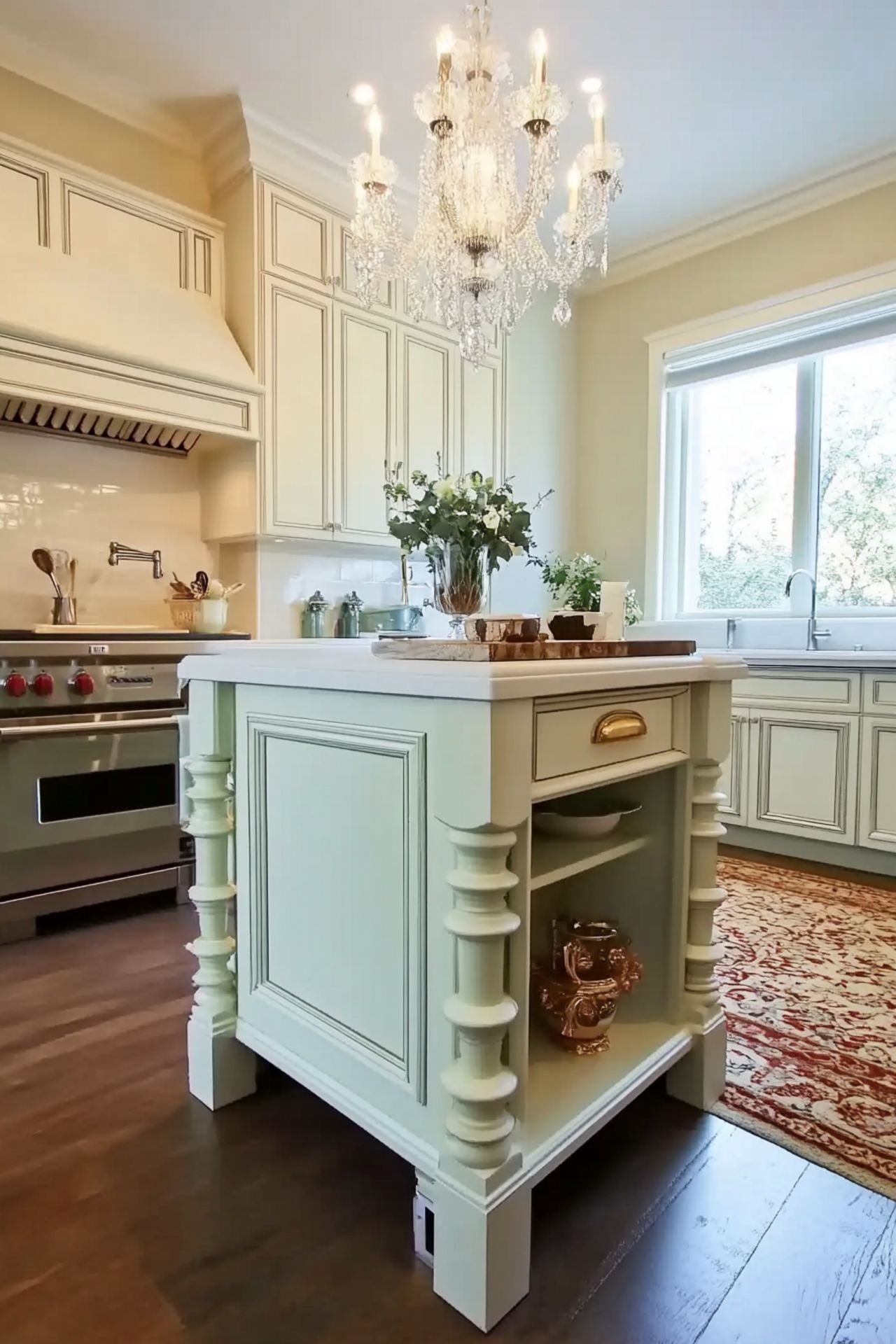
Whether you want a kitchen island with cabinets or seating, start by measuring your space. Think about what you need for storage and work. Choose materials and features that match your kitchen’s look.
A well-designed narrow kitchen island can boost your home’s value. It also makes cooking and entertaining more fun. So, be creative and turn your kitchen into a space that’s both efficient and stylish.
FAQ
What are the benefits of having a kitchen island in a narrow kitchen?
A kitchen island can save space and boost functionality in a narrow kitchen. It adds value and style to your home.
What are the essential measurements to consider for a narrow kitchen island?
When designing a narrow kitchen island, think about the minimum clearance and optimal dimensions. Also, consider the flow of traffic to ensure it’s functional and efficient.
What are the popular styles of narrow kitchen islands?
Narrow kitchen islands come in many styles, like modern, country, and open-concept. Picking the right style can enhance your kitchen’s look and function.
What are the smart storage solutions available for compact kitchen islands?
For a narrow kitchen island, use built-in cabinets and pull-out storage. Add organizational accessories to keep your kitchen tidy and efficient.
What materials and finishes work best for narrow kitchen islands?
Choose materials like wood, granite, or quartz for your narrow kitchen island. They look good and are durable, fitting well with your kitchen’s style.
What innovative features can enhance the functionality of a narrow kitchen island?
Features like retractable elements and multi-purpose surfaces can boost a narrow kitchen island’s functionality. Adding built-in appliances is also a great idea.
How can I create a budget-friendly narrow kitchen island?
To make a budget-friendly narrow kitchen island, think about DIY projects. Understand the cost range and focus on features that add value without breaking the bank.
What are the common design mistakes to avoid when creating a narrow kitchen island?
Avoid mistakes like poor measurements, not enough storage, and bad lighting. Being aware of these can help you design a functional and stylish narrow kitchen island.

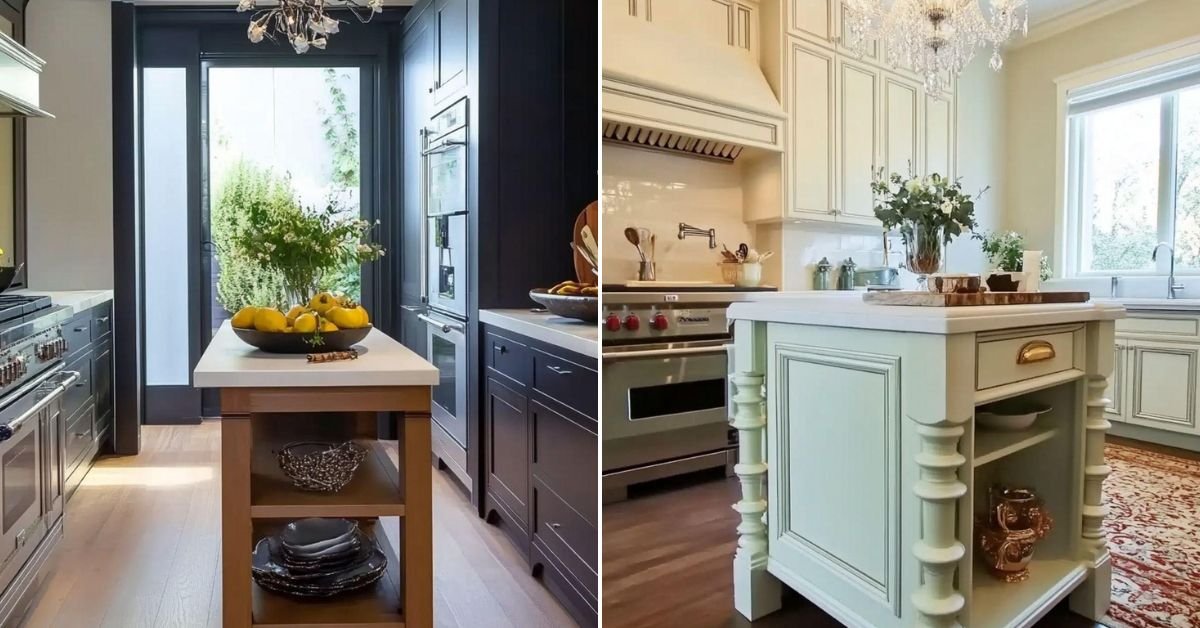






Leave a Comment